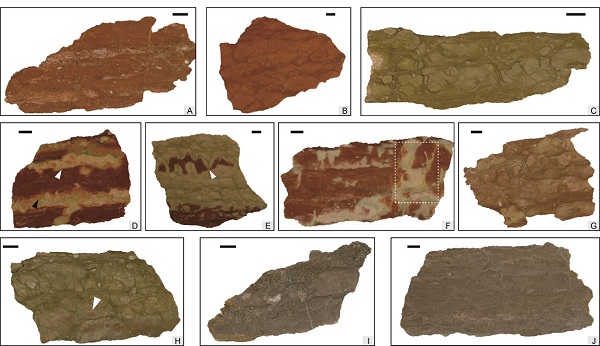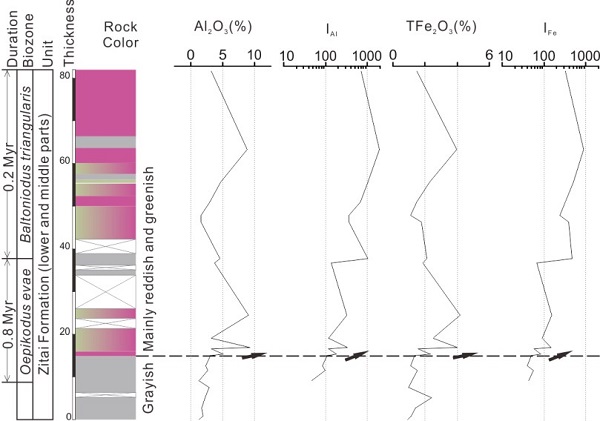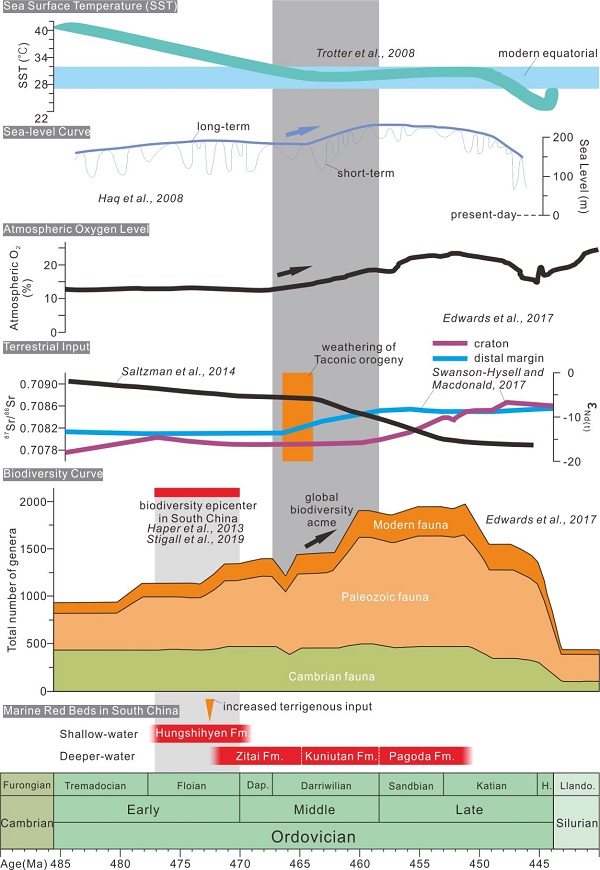Marine red beds (MRBs) are considered as time-specific facies and have indicative significances in revealing the evolution of marine paleo-environments. In contrast to shallow-water and oceanic MRBs, deeper-water MRBs around deep subtidal zone received less attention. During the Floian to Darriwilian, a set of reddish limestones deposited along the marginal Yangtze Platform, South China, including the Zitai Formation as well as the middle parts of the Dawan and Meitan formations. Interestingly, the Early–Middle Ordovician is also the critical interval of the Great Ordovician Biodiversification Event (GOBE) in South China.
The Early-Paleozoic research team from Nanjing Institute of Geology and Palaeontology, Chinese Academy of Sciences (NIGPAS), in collaboration with specialists from Peking University and University of Science and Technology of China, has been carrying out the petrological, mineralogical and geochemical study on these MRBs, as exemplified by the Zitai Formation from Xiangshuidong section, Songzi County, Hubei Province and Daling section, Shitai County, Anhui Province. This progress has been accepted in the special issue VSI28 "Marine oxygenation, deoxygenation and life during the early Paleozoic" of Palaeogeography, Palaeoclimatology, Palaeoecology.
Accordingly, significant increases were observed in the terrestrial elements (e.g., aluminum, iron) during the deposition of the MRBs instead of redox fluctuations, when the sedimentation rate has also increased. It suggests iron material of terrestrial origin rather than seawater oxygen level could be the most important factor for the MRBs. By providing nutrients into marine environment, increased terrigenous materials might facilitate the radiation of the planktonic acritarchs, chitinozoans and graptolites and benthic brachiopods during the Early-Middle Ordovician in South China, which means regionally environmental factors might be critical for biological radiations at the early stage of the GOBE.
Reference: Luan, X.C., Zhang, X.L., Wu, R.C., Zhan, R.B., Liu, J.B., Wang, G.X., Zhang, Y.C., 2020. Environmental changes revealed by Lower–Middle Ordovician deeper-water marine red beds from the marginal Yangtze Platform, South China: Links to biodiversification. Palaeogeography, Palaeoclimatology, Palaeoecology. https://doi.org/10.1016/j.palaeo.2020.110116 (In press)

Polished slabs of the Zitai MRBs

Concentrations and influxes of aluminum and iron at the Xiangshuidong section

Biodiversity curve, paleo-environmental conditions and distribution of marine red beds in South China during Ordovician
